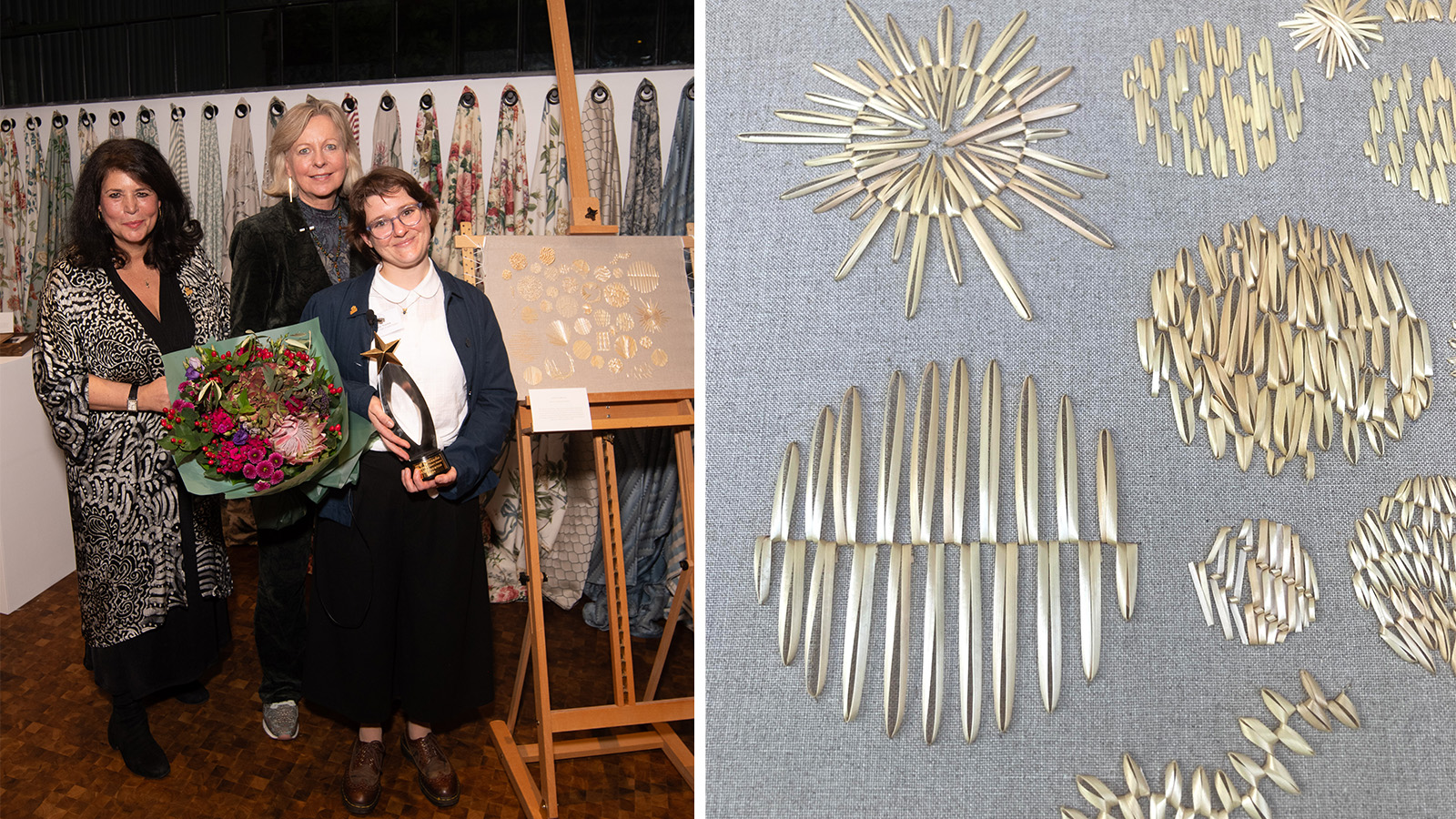
As Frieze, Decorex and PAD descended on London this week with all their majesty and merriment, over in Chiswick a significant new award was handed out celebrating the revival of straw embroidery. Hanny Newton is the recipient of the inaugural QEST Sanderson Rising Star Craft award, receiving a mighty cash prize of £25,000 to help shore up her knowledge and skill, and develop it into a business.
Newton’s work is undeniably exquisite. We might be familiar with the technique of straw embroidery from museum collections, yet seen anew it feels remarkable for its modernity and one wonders why time has not been favourable to such a distinct form of work. Such is the importance and value of this new award. It is less about resurrection or preservation and more about catapulting something with relevance and potential to scale into the market; seeding cultural investment in the truest sense.
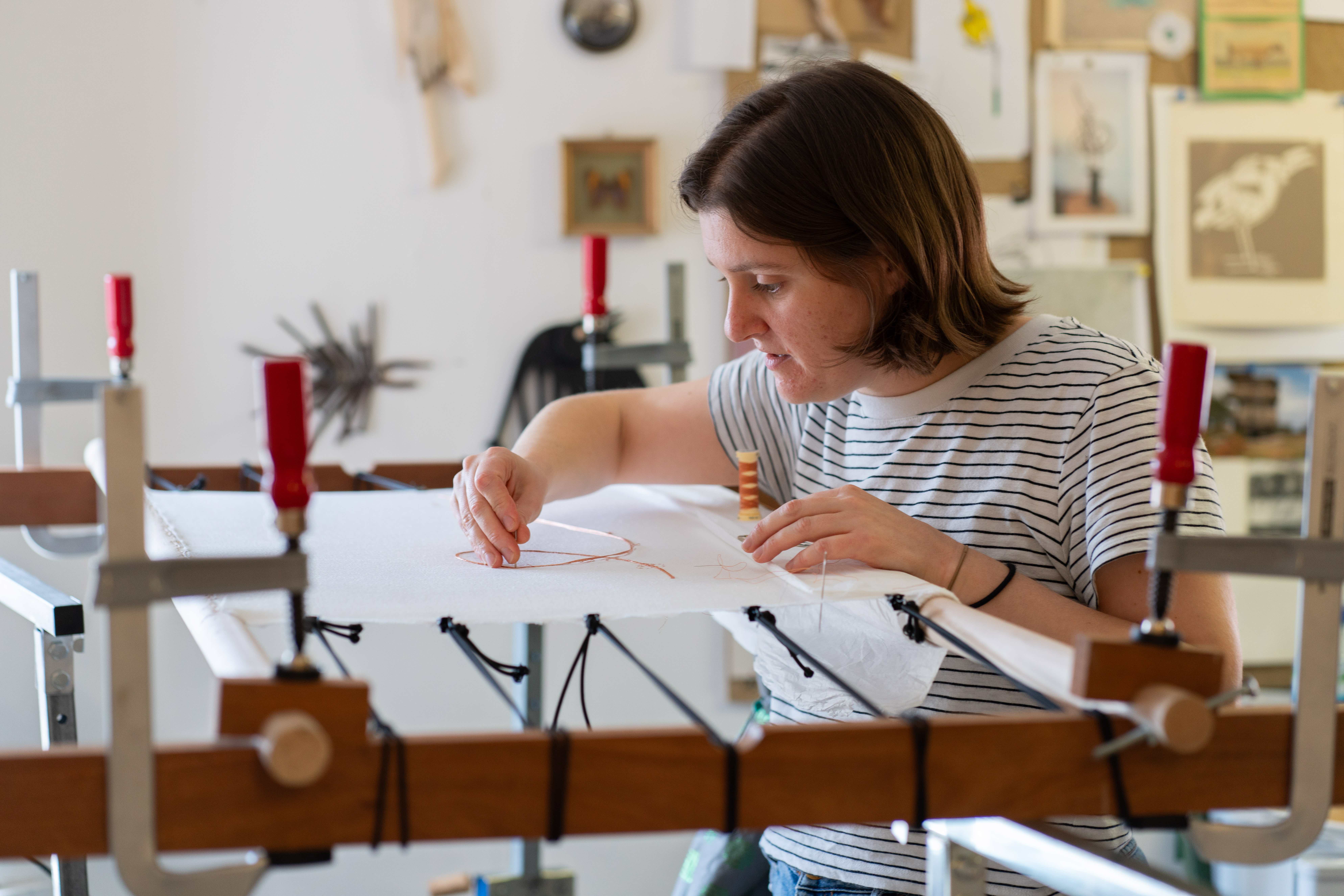
Speaking of her award, Newton said: 'I am delighted and incredibly excited… Since being introduced to straw thread two years ago, I have been passionate and driven to champion straw embroidery as an exquisite, sustainable “natural gold”. The honour and significant boost of this award at this formative time in my career allows me to dream big as I innovate with historical craft techniques. This really is a dream come true!
‘It will allow me to study rare collections and make important contributions to the scarce knowledge and tools of straw embroidery so they can be carried forward for future generations. I will then build on this period of study by using it as a foundation for pushing my art practice, creating new works for exhibition that innovate with sustainable materials,' she continued. 'It is my hope that these new works will stimulate and inform debate around the sustainability and value of materials.'
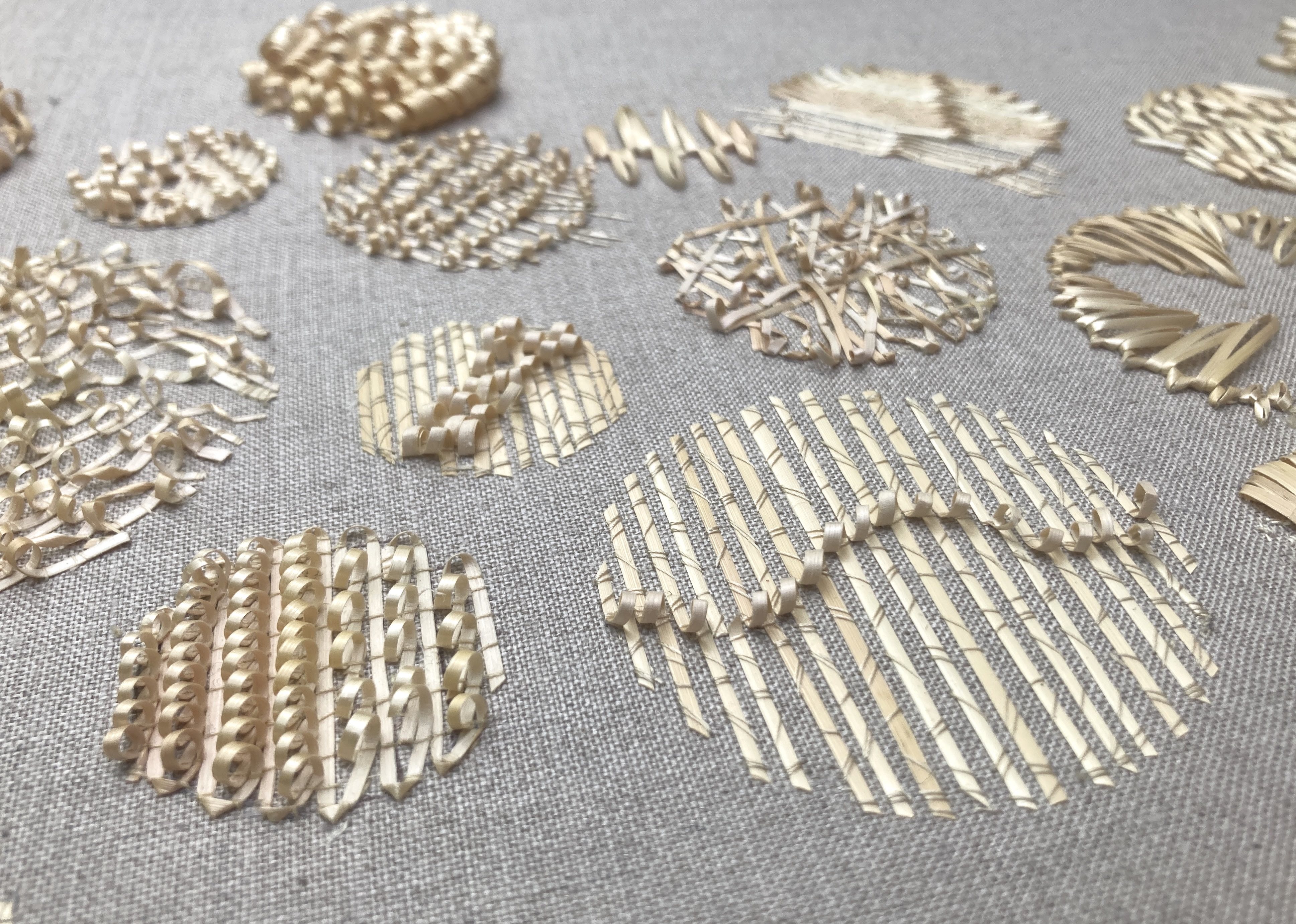
Newton was chosen from a shortlist of six craftspeople, whittled down from 189 nominations by a panel of judges including the interior designer Benedict Foley, Debika Ray and Emily Tobin, the editors of Crafts and World of Interiors respectively, QEST CEO Deborah Pocock, and Sanderson Design Group CEO Lisa Montague. As the finalists gathered with a crowd of design luminaries at Voysey House (Sanderson’s HQ) to await the announcement, we sat down with Pocock and Montague to hear more about how the award came to be and what they hope it will enable.
Behind the judging scenes of the QEST Sanderson rising star award

Wallpaper*: Why did you bring the award into existence?
Lisa Montague: Our motto at Sanderson is ‘Live Beautiful’ and we’re always asking ourselves how we can bring this to life meaningfully, not just in the work that we do as a brand and business, but in the community too. What can we do that’s different and how can we make genuine impact?
Deborah Pocock: QEST stands for the Queen Elizabeth Scholarship Trust, and we are an educational trust with the mission to support and sustain craft and craftspeople. Next year we will celebrate our 35th anniversary – we’re not quite as old as Sanderson, which was founded in 1860, but it’s still a milestone birthday. Together, we wanted to establish an award that would be transformational for a young person of significant skill and vision.
LM: It felt important that it should be a prize sum that would be career-changing for someone early in their practice, where the money would have very real impact to enable the recipient both to focus and develop their work.
DP: One of the critical judging criteria as a result was clear demonstration by the individual as to how they would use the money to transform their practice. Viability for growth and development were important factors.
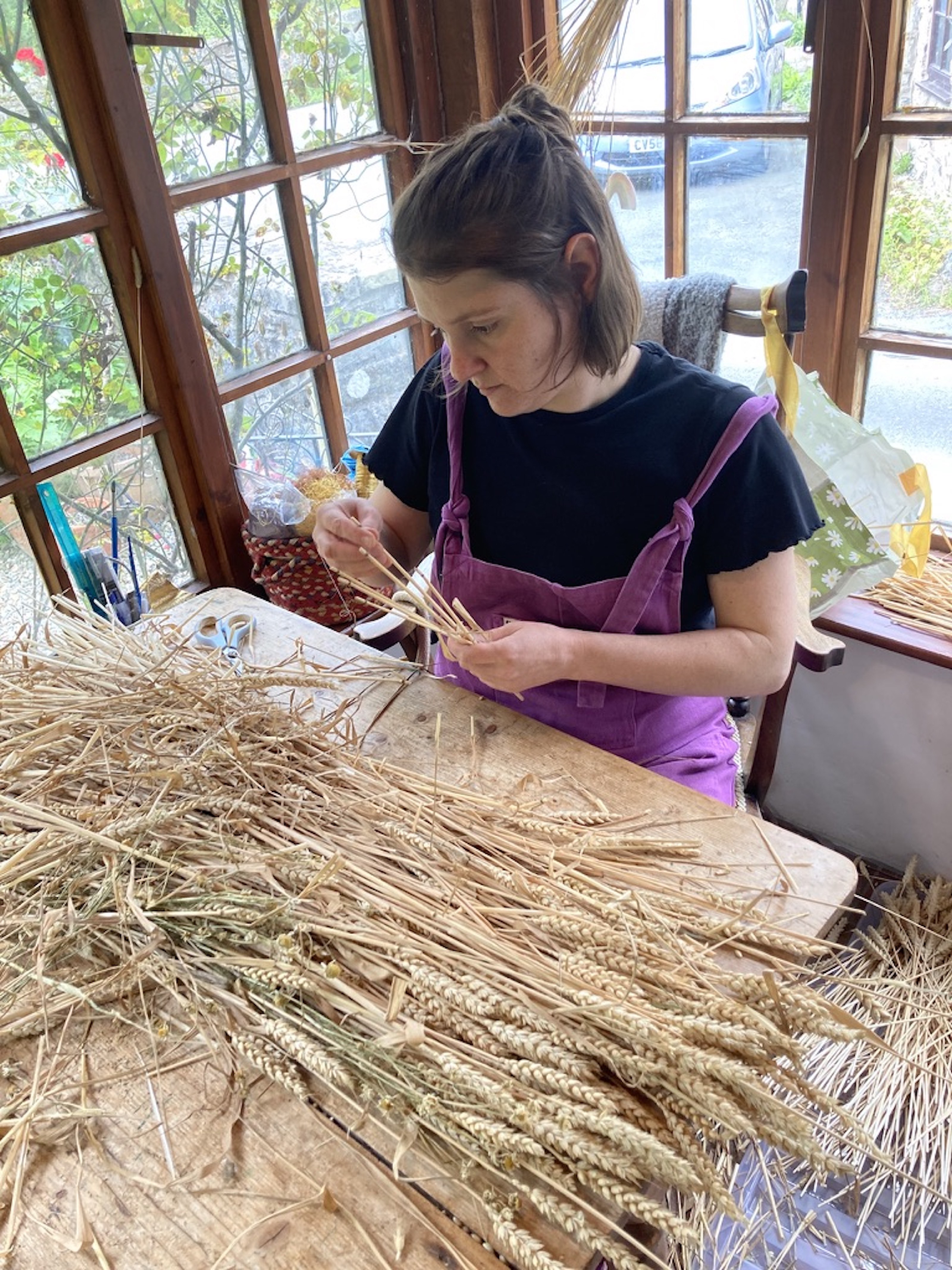
W*: It is refreshing to see a substantial prize, investing in this stage of someone’s career. It feels important as a counter to the rather unfair stigma which craft tends to suffer from: that it’s largely concerned with saving and rescuing dying skills.
DP: We are all concerned with ways to help people understand that craft lives and evolves constantly. It has always been innovative, and it’s important that we tell stories so people understand the depth of value of craft in contemporary life.
LM: We are proud of how central craft is to our history and heritage at Sanderson, but nobody wants to live in the 19th century. Craft has to be commercially viable to endure.
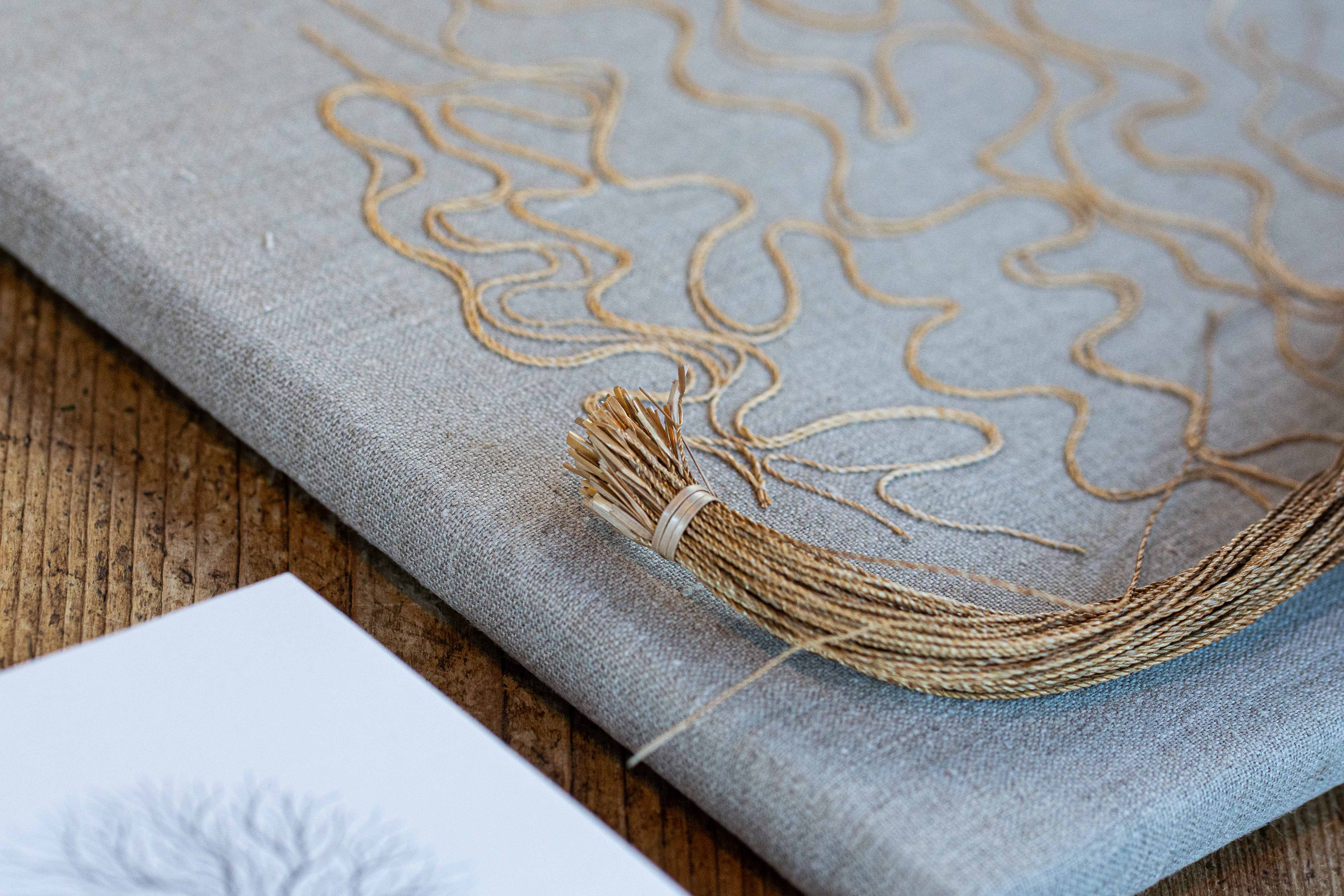
W*: What has surprised you about the award?
DP: This is the first award, and we were overwhelmed by the volume of entrants we received, and also by the prestige of the people who nominated.
LM: The overall quality was incredible, and the sheer breadth of work was extraordinary. We made the decision early on to do the prize every two years so that it becomes meaningful. It’s a lengthy and intense process and it feels responsible to make it a bigger sum and award it every two years.
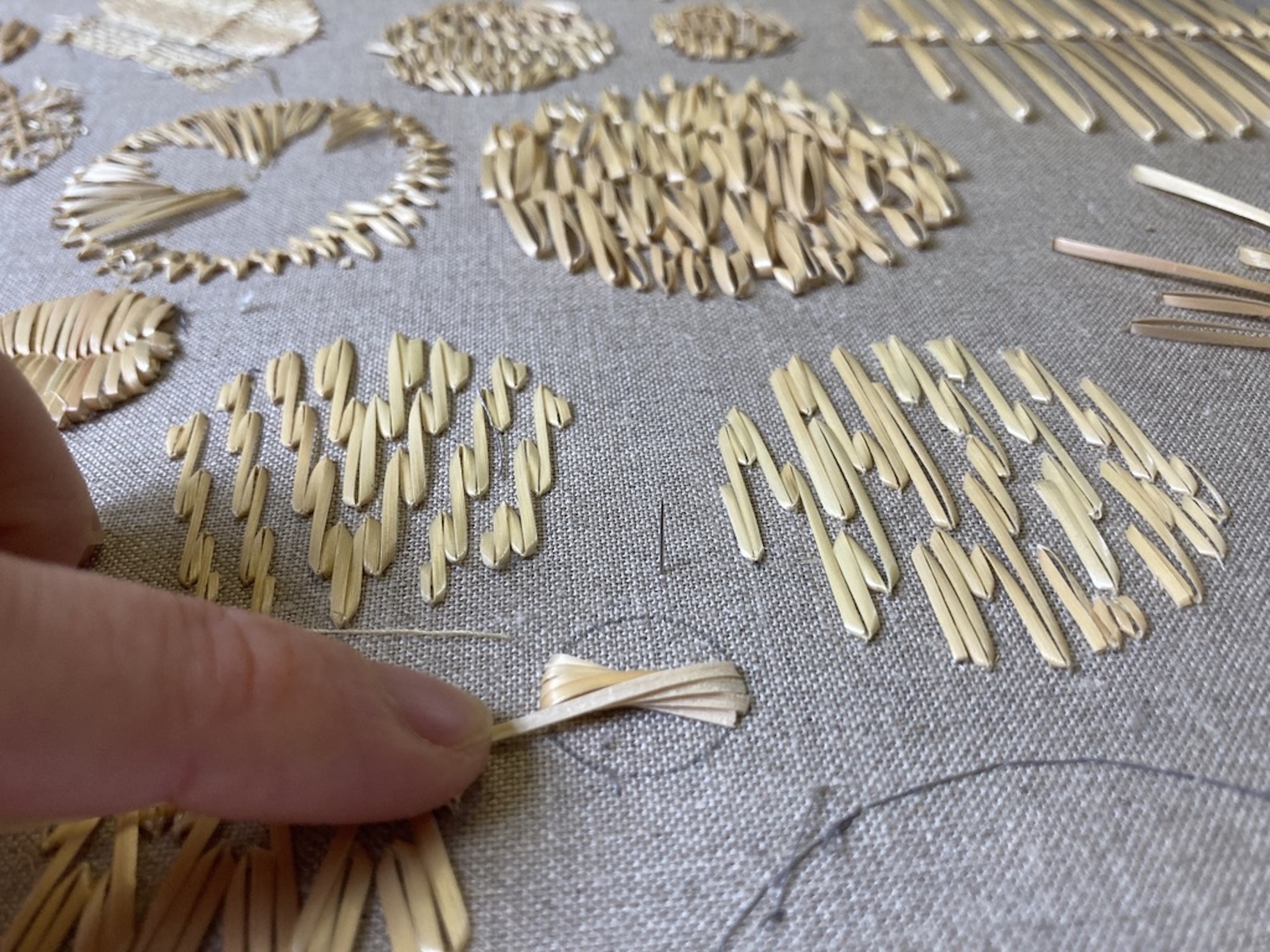
W*: What stood out for you in Hanny Newton?
DP: Hanny is reintroducing a historic, extremely rare and beautiful craft with a compelling sustainability angle. The rigour of her research in just two years was so impressive, and we felt that she is at an important stage in her journey where the award would help open up avenues and applications in the development of her product.
LM: We also admired her acknowledgment that education matters. She has a drive to pass on her knowledge, and give back to the community. We feel she will have impact on her field, alongside her obvious skill, vision and the commercial viability of her craft.
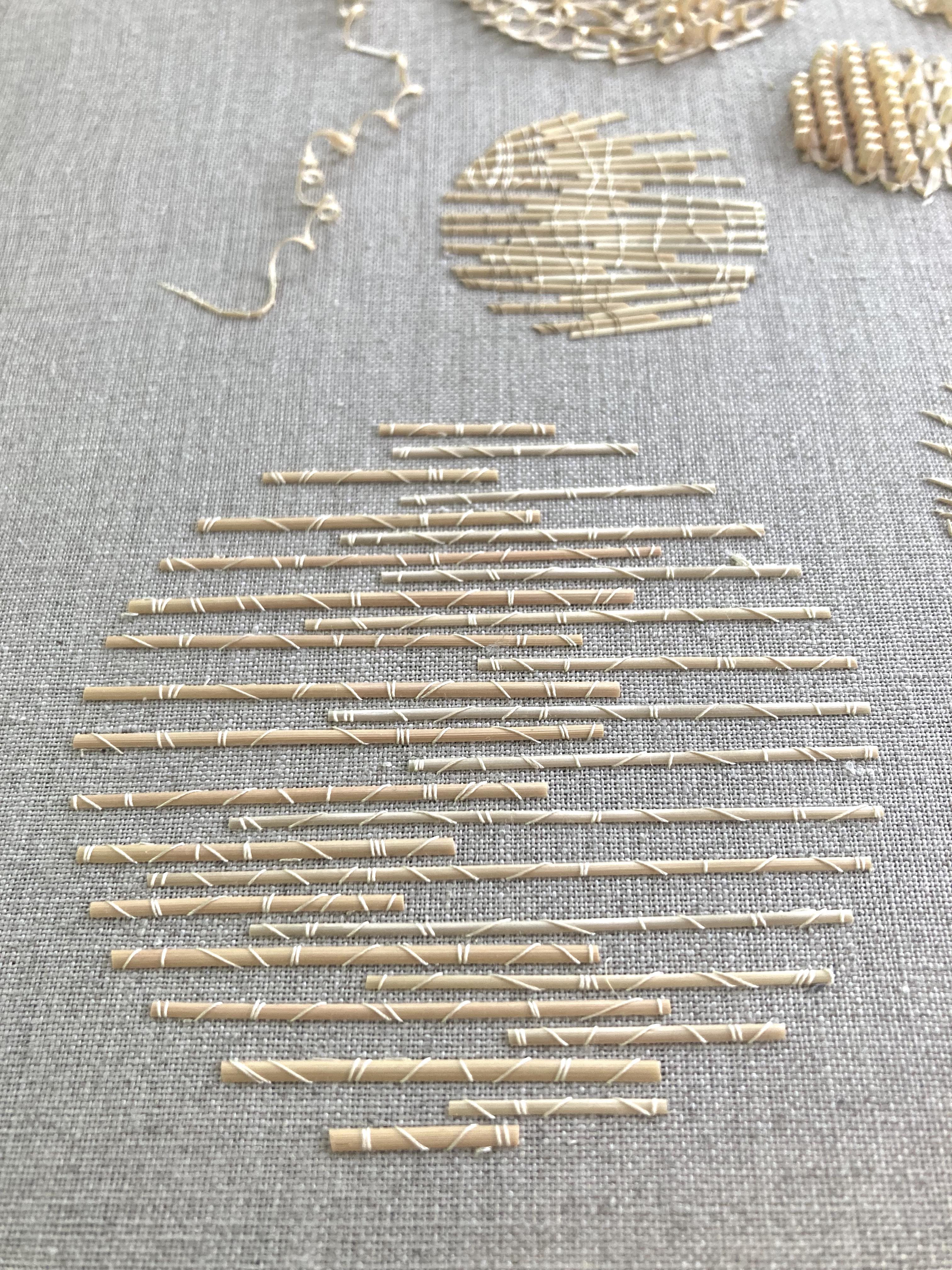
W*: It feels as though we are experiencing a greater appreciation more broadly of craft and its place in life. Are you optimistic for the craft sector generally?
DP: I am hugely optimistic. In my role I see so much talent, but what I find incredible is that craft’s contribution to the UK economy is £3.4 billion annually. It is a significant economic driver, and far more than a hobby.
LM: I think the more our lives are governed by automation and globalised commodification, the more we are seeing people respond favourably to craft and understanding its value. We hope to engage and inspire the next generation, and to show what craft can do in the realm of manufacturing. I believe that true luxury is about time – allowing time to let something become what it can become; what it might become. We hope this prize gives Hanny time and breathing space for just that.
hannynewton.co.uk
qest.org.uk
sanderson.sandersondesigngroup.com







